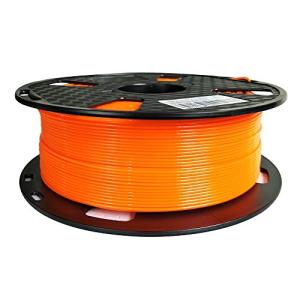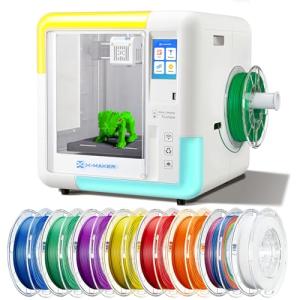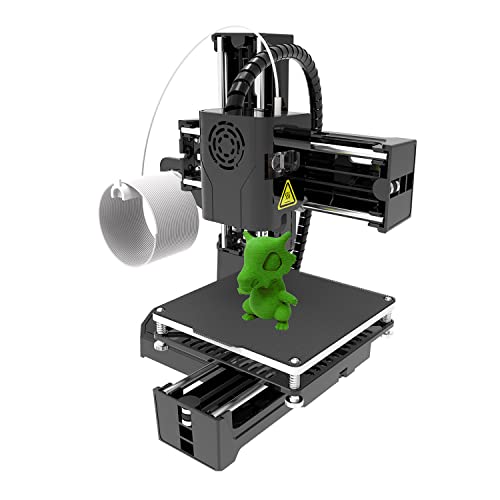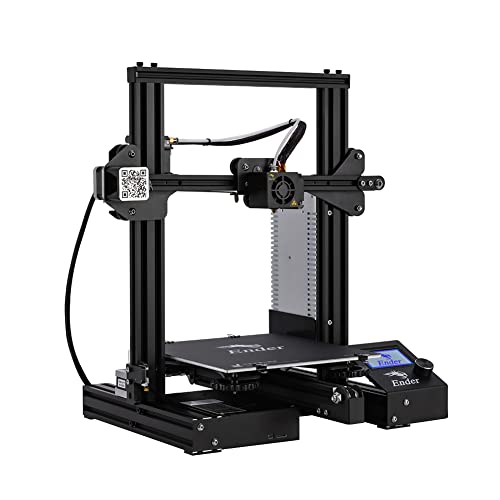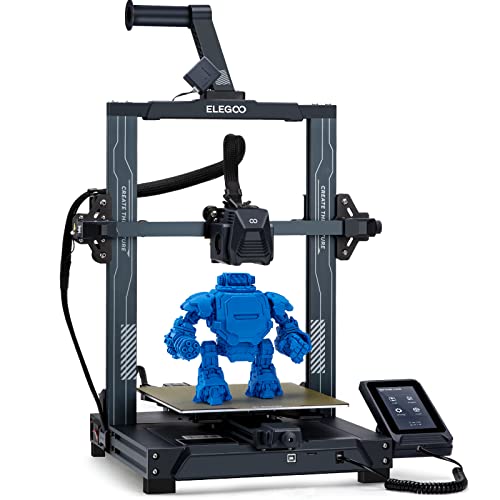3D printers are super cool machines that create objects layer by layer. They start with a digital design, often made using special software or downloaded from online repositories. Once you have your design ready, the printer turns that idea into a tangible item using materials like plastic filament, resin, or even metal!
If you're diving into the world of 3D printers for beginners, you'll find there are a few different types to choose from, like FDM (Fused Deposition Modeling) and SLA (Stereolithography). FDM printers are popular for their ease of use and affordability, making them great for newbies. They work by melting plastic and laying it down in layers to build up your design. On the other hand, SLA printers use a light source to cure resin, offering amazing detail but usually at a higher cost.
Getting started doesn't have to be overwhelming. Many 3D printers come with user-friendly software to help you get your first prints rolling. You'll also find tons of tutorials and community forums where you can ask questions or find inspiration. Plus, the possibilities are endless. You can print anything from toys and household items to custom parts and art pieces!
When you’re picking a 3D printer, think about what you want to make and how much space you have. Some smaller models are perfect for a desk, while bigger ones can handle larger projects. Budget is also a big deal; there are great options available at nearly every price point. So, find the right fit for you and get your creative juices flowing!
Choosing the Right 3D Printer
Picking the right 3D printer can feel a bit overwhelming, especially for beginners. There are so many options out there, and they all come with their own perks and quirks. To make your life easier, let’s break it down into a few key factors.
First up, think about what you want to make. Are you focused on creating detailed miniatures, or do you need something that can handle larger projects? For intricate designs, look for printers with high resolution. If larger prints are your goal, check out models with ample build volume.
Next, consider the type of filament you want to use. Some popular options include PLA, ABS, and PETG. PLA is great for beginners because it’s user-friendly and doesn’t require a heated bed. ABS, on the other hand, is tougher but can be a bit finicky. Look for 3D Printers for Beginners that support a variety of materials for flexibility.
Don’t forget about ease of use! Something with a simple setup and a user-friendly interface will save you a lot of headaches. Features like auto bed leveling can make a huge difference, especially if you’re just getting started.
Finally, keep an eye on the community and support around the printer. A brand with an active user base and good customer service can be incredibly helpful as you learn the ropes. Getting involved in forums or social media groups can make your journey into the world of 3D printing way more fun!
Orange 1.75mm PETG Filament 1KG for 3D Printers
Get vibrant, durable prints with this high-quality filament that's easy to use and perfect for all your 3D projects
Product information
€14.76 €13.63
Product Review Score
4.14 out of 5 stars
69 reviewsProduct links
Essential Tools for 3D Printing
Diving into 3D printing can be super exciting, but having the right tools makes all the difference. If you're new to the game, you'll want to gather some essential gear to make your journey smoother. Here’s a quick rundown of must-haves for 3D Printers for Beginners.
1. A Good Quality Filament
Filament is the magic material that makes your 3D printer do its thing. Look for PLA or PETG if you’re just starting out. They’re easy to work with, produce great results, and are widely available. Plus, they come in fun colors!
2. A Reliable Slicing Software
Slicing software converts 3D models into instructions your printer can understand. Popular options like Cura or PrusaSlicer are user-friendly and free. They let you tweak settings to get the best output and help you learn as you go.
3. A Clean Workspace
Having a tidy workspace is super important. Set up a dedicated area for your printer and tools. This will help you stay organized and keep your prints safe from dust and debris. Plus, it just feels good to have everything in order!
4. Basic Tools
You’ll want some basic tools on hand, like a spatula for removing prints, tweezers for any tiny details, and a pair of scissors or snips to trim filament. These will help you handle prints and maintain your printer with ease.
With these essentials, you’ll be well on your way to enjoying the fun world of 3D printing. Just remember, practice is key, and before you know it, you’ll be creating amazing designs in no time!
AOSEED X-Maker 3D Printer for Kids and Beginners
A user-friendly 3D printer that makes creating fun projects easy and exciting for kids and beginners
Product information
€399.50 €319.60
Product Review Score
4.3 out of 5 stars
7 reviewsProduct links
Tips for Your First Print
Getting started with 3D printers for beginners can feel a bit overwhelming, but it doesn’t have to be! Here are some handy tips to help you nail your first print and get excited about all the possibilities.
First things first, always calibrate your printer. This step makes a huge difference in print quality. Check the bed leveling and make sure your nozzle is at the right height. A well-calibrated machine means your first print has a much better chance of succeeding!
Next, choose a simple model to start with. Look for beginner-friendly designs online. Something like a small figurine or a simple phone stand is perfect. These projects are straightforward and don’t take too long. Plus, they give you a cool piece to show off once you’re done!
Don’t forget about your materials! Start with PLA filament. It’s super forgiving and works well with most entry-level 3D printers for beginners. It prints at lower temperatures and has minimal warping, making it a great choice for newbie projects.
Lastly, keep an eye on your print as it develops. It’s exciting to watch, and catching any issues early can save you from wasting time and material. If you notice something off, you can pause the print and troubleshoot right away!
